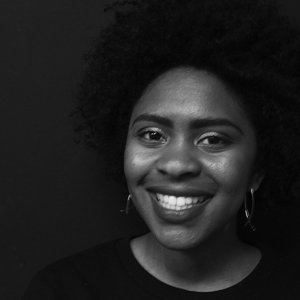Colvin: ‘Hotline Bling’ challenges mainstream beauty standards
It’s been just over a week since Drake broke the Internet by dad dancing in a turtleneck against dreamy James Turrell-inspired art installations. However, the music video for “Hotline Bling,” released by Drake on Apple Music, offers more than just memes and gifs.
The women who appear as silhouettes against neon lights in the video are fuller-figured. While Drake is probably not the first rapper in the history of music to feature bigger women, he should be praised for his choice of dancers. The Canadian rapper sends the message that big is beautiful, even in a world where any woman who is above a size two is considered “plus size.”
The women of “Hotline Bling” are stunning in a manner that is right in line with rap music norms. Due to the ethnic roots of hip-hop, rap’s beauty standards have always been less Eurocentric than that of runways and haute couture magazines. This beauty – whose lips, hips and behinds are bigger – has existed for hundreds of thousands of years in people of African and Latina descent, but now is becoming more and more apparent in mainstream culture.
The rise of curvy celebrities, like the Kardashian sisters, is a reason that these physical characteristics are now more accepted in the mainstream.
Demi Lovato, an emerging icon of body positivity, credits the Kardashians with helping her accept her own curves and those of thick women, including Beyoncé. Lovato’s admission to this in her Complex cover story illustrates the importance of size representation in all facets of the media, even if it’s just E! News.
As with any standard, there will be outliers. Some women have said that the “thick” ideal of hourglass figures is essentially unattainable if women are not naturally endowed. Be that as it may, body-shaming for fatness as opposed to thinness is more pervasive. The fashion industry’s top models have a quantifiable beauty and magazines regularly retouch their subjects to make them appear as slender as possible.
The existence of such a narrow beauty standard is what makes “Hotline Bling” extraordinary. While all women are beautiful, this music video provided a medium in which curvier women were presented in a respectful, exciting and glamorous light. If more rappers were inclusive in their video castings, they would bring about a change in the public’s perceptions of bigger women.
However, not all rappers have had the same exposure to body-positive feminism as Drake. He has been romantically linked to Nicki Minaj and Serena Williams. Both of these women have been vocal about the fact that they have bodies that challenge popular conceptions of physical beauty.
The album art of Minaj’s most recent release, “Anaconda,” sparked controversy as the rapper fearlessly showcased her voluptuous figure. Similarly, the album’s title track is a love letter to her butt and a positive nod to other curvy women. Minaj spoke out earlier this year about the lack of representation for women with bigger figures in the pop industry in regard to MTV Video Music Awards.
Like Minaj, Williams has also faced ridicule for her body proportions and has turned the negative attention into a means of promoting body pride and self-confidence. Despite having a career built on agility and feats of strength, Williams’ muscular physique has been derided for being masculine. However, Williams has said that she pays no mind to body-related criticism as she has people to inspire and Grand Slams to win.
In the same way that these women are dominating in their respective industries, Drake is undeniably the current king of rap. Just as Drake knew that his dancing would become a meme, surely he knew that he could use his high-profile platform to set a standard of beauty, fashion and rap music video aesthetics.
Rappers, if you’re reading this, it’s not too late to make a positive impact when it comes to rap’s representation of women. More male artists should follow in the “6 God’s” example of being inspired by women, rather than objectifying them.
Caroline Colvin is a sophomore magazine journalism major. Her column appears weekly. She can be reached at ccolvin@syr.edu and followed on Twitter at @fkacaro.
Published on October 28, 2015 at 11:04 pm






